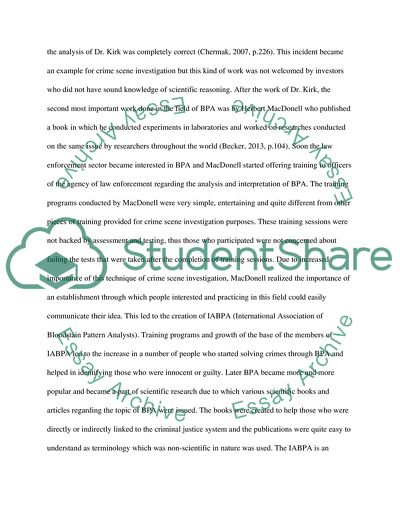Cite this document
(“Bloodstain Pattern Analysis Essay Example | Topics and Well Written Essays - 1750 words”, n.d.)
Bloodstain Pattern Analysis Essay Example | Topics and Well Written Essays - 1750 words. Retrieved from https://studentshare.org/law/1465363-bloodstain-pattern-analysis
Bloodstain Pattern Analysis Essay Example | Topics and Well Written Essays - 1750 words. Retrieved from https://studentshare.org/law/1465363-bloodstain-pattern-analysis
(Bloodstain Pattern Analysis Essay Example | Topics and Well Written Essays - 1750 Words)
Bloodstain Pattern Analysis Essay Example | Topics and Well Written Essays - 1750 Words. https://studentshare.org/law/1465363-bloodstain-pattern-analysis.
Bloodstain Pattern Analysis Essay Example | Topics and Well Written Essays - 1750 Words. https://studentshare.org/law/1465363-bloodstain-pattern-analysis.
“Bloodstain Pattern Analysis Essay Example | Topics and Well Written Essays - 1750 Words”, n.d. https://studentshare.org/law/1465363-bloodstain-pattern-analysis.


